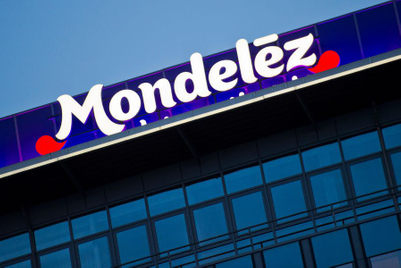
As the year ends in a couple of weeks, CFOs will be getting certainty on their 2020 results. In China, many may recognise that despite the Singles Day results, this year’s catapulting trend of high-frequency activations, such as livestreams, promotions and ecommerce festivals have come at too high a cost. Fees, discounts, commissions, higher media spend, and higher internal cost will become clearly visible.
For 2021, it will become clear, you can no longer predominantly rely on sales activation growth—not to mention that the cost of these activations and ecommerce festivals will further inflate in 2021.
China's economy has clearly improved substantially more than other markets. October retail showed a 4.3% growth rate. However this still represents a gap of 3.5% compared with the average monthly growth in 2019[i]. There are two factors that limit consumer market growth.
First, Chinese consumers are staying more prudent. Savings increased by 8%, while consumer credit balances went down by 22%[ii]). Consumers have become more value-for-money focused, as the international Covid-19 and US-China situations keep on generating insecurity. The second reason is the shift from offline to online buying. Covid-19 has accelerated the Chinese ecommerce market to an even higher level. In H1, online sales increased at a 7.3% rate[iii] (while total retail was down by 11.4%). This resulted in a 5.6% increase in ecommerce's share of the total Chinese market, on top of what was already the world's highest share, at 34%, at the end of 2019. Covid-19 attracted new users like age groups above 30 (increase by 11%) and consumers from tier-3 cities and beyond (increase by 12%[iv]).
While switching to online, we see consumers becoming less loyal and more price-driven, a trend that we have seen already over the last four years in our Havas Meaningful Brands research[v]. This is not surprising given the enormous amount of promotions, activations, livestreams and ecommerce festivals. Even for many categories that have seen clear upsurges in the last half year—luxury products, family leisure-related products, mobile and tech products, household appliances, cosmetics and sports apparel to name a few—consumers more and more are waiting for promotions, as they know they are coming, and coming very often.
During the pandemic, brands in China very quickly launched additional and new forms of sales activations to recoup the sudden losses. They have continued using these tactics during the stabilisation phase and after. Driven by the ecommerce platforms and fast-rising social commerce ecosystems, activations for local Chinese festivals, ecommerce festivals and other sales recoup activities have risen to an all-time-high level. Last Chinese Valentine’s Day and Super Brand days in September showed all-time-high levels of activations, exclusive product offerings and media spend.
Singles Day (November 11) showed the same development. Tmall’s upgrade of the event from a 'Shopping Festival' to a 'Shopping Season' with two big sales waves gave consumers more time to buy and pushed brands to discount for a longer time. While competition gets fiercer and fiercer, a record 250,000 brands participated. Tmall even pressured brands to launch their newest and more exclusive items during this price circus; as an example Dior offered exclusively designed products for the shopping festival, much like it has done for Qixi (Chinese Valentine's Day).
Hunger for sales recoup in general—and for Western brands the potential to especially recoup on the Chinese market—has urged brands toward the discussion of whether you can predominantly rely, longer-term, on these kinds of sales activations.
We all know the costs are high. Currently a three-minute livestream KOL will ask for a fee of around RMB 500,000 (about US$76,500), while the commission for livestreams on average lies between 22% and 35%. For ecommerce festivals, more and more competitors are bidding for the same positions, which has driven investment levels up substantially. When not fully delivering incremental sales, these costs have a disastrous effect on brands' margins. And these costs will further inflate due to continuously rising digital-media costs. For example, for KOLs, yearly digital media inflation will be 5% to 10%[vi] in 2021.
Repair agenda
A brand pull effect that creates longer lifetime consumer value and reduces the cost of consumer acquisition needs to get higher priority to repair profitability in China. It is certainly true that brands, in most categories, make the highest profitability on loyal consumers. This group includes not only consumers who regularly buy non-discounted products beyond sales activations but also those consumers who buy more standard items that have the highest margins and even those who buy the higher-ticket items.
Repairing profitability might come with a painful process of decreasing topline growth while improving bottom-line growth. Practically, there are three ways to go about building a stronger brand pull effect:
- Better balance of branding versus activation in marcomm
- More brand consistency in activations to create a side brand-building effect with creative agencies
- A full ecommerce ecosystem beyond third-party platforms with owned and social stores attracting more loyal consumers with a differentiated product range, additional services and content.
The Chinese market and its digital ecosystem offer opportunities to build a brand pull effect in a more diverse, new media and targeted way. These include digital platforms with digital-video campaigns, including short video, that can be more targeted and impactful, branded content that creates more brand engagement, O2O tactics that deliver new brand experiences and social platforms with armies of KOLs that can bring the brand story alive, even with conversion side-effects. But this implies, on the brand side, a less fragmented way of working and more long-term partnerships with agencies for creative work.
Dennis Potgraven is chief strategy officer for Greater China at Havas Group.

References:
- [i] China National Bureau of Statistics, The Economist Unit
- [ii] China National Bureau of Statistics
- [iii] Mc Kinsey, 2020
- [iv] QuestMobile, 2020
- [v] Havas China Meaningful Brands 2015 - 2019
- [vi] Havas Media Market Pulse





.jpg&h=334&w=500&q=100&v=20250320&c=1)
.jpg&h=334&w=500&q=100&v=20250320&c=1)
+(1).jpg&h=334&w=500&q=100&v=20250320&c=1)



.jpg&h=334&w=500&q=100&v=20250320&c=1)


.jpg&h=268&w=401&q=100&v=20250320&c=1)
.png&h=268&w=401&q=100&v=20250320&c=1)



